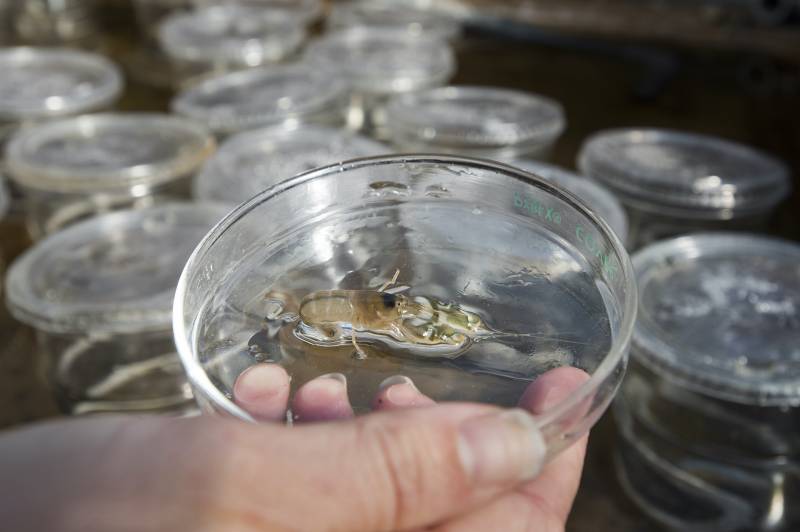You may think it’s quiet in the ocean, but a tiny creature is raising quite a ruckus as ocean temperatures rise. New research presented at this year’s Ocean Sciences Meeting in San Diego says the oceans may be getting louder.
And that’s because of shrimp.
The ocean’s acoustic environment has been drawing a lot of attention as scientists learn that many of its inhabitants use sound to communicate. Whale songs and dolphin squeals have captivated audiences of nature documentaries and animated films, but fish and invertebrates also signal one another with sound in the ocean waters.
Snapping shrimp — over 300 species of them — live in coastal oceans all around the world. These shrimp may be some of the smallest critters in coral reefs, and they’re also some of the loudest. Generally less than an inch long, these tiny crustaceans snap their claws fast to create air bubbles that implode with a pop! With these sounds, snapping shrimp communicate with each other and defend their territory. The combined snaps from shrimp colonies create a cacophony that divers and submarine crews can easily hear. You can hear the sound, which is reminiscent of spattering rain or fying bacon, by clicking here or on the audio link at the top of the article.

